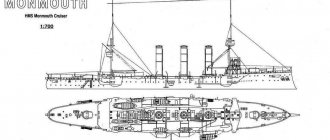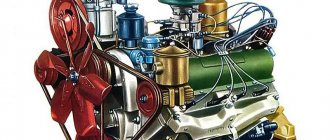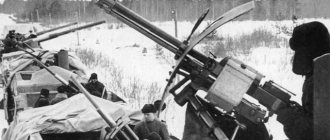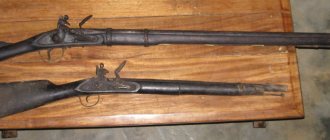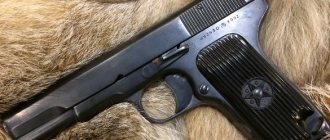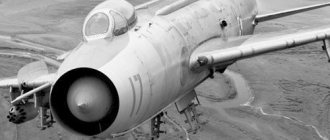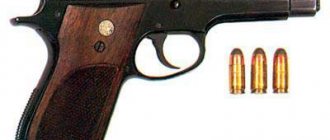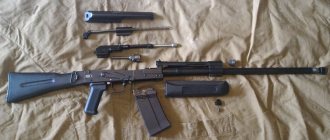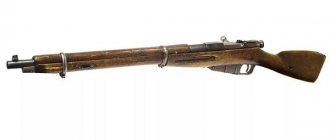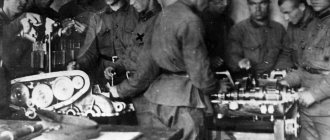Photo: Anton Tushin
The Russian Helicopters holding company has launched serial production of the Mi-35P transport and combat helicopter. This is the latest modification of the legendary Mi-24 “Crocodile”, created 50 years ago. It was not for nothing that the creators nicknamed the improved Mi-35P “Phoenix” - having been reborn, the machine inherited all the advantages of the Mi-24, got rid of the shortcomings, and also received new capabilities. Read about Rostec's newest production helicopter in our material.
History of the creation of Mi-24 and Mi-35 helicopters
There is a joke - “what are helicopters? these are the souls of dead tanks.” Surely, everyone who at least once sees the Mi-24 combat helicopter . However, abroad the “crocodile” (nicknamed the Mi-24 for its characteristic appearance) is better known under the export designations: Mi-25 and Mi-35. The Mi-25 is an export version of the Mi-24D modification, and the Mi-35 is a modification of the Mi-24V.
Both options differ from the “Russian” version in the complexes of on-board equipment, and theoretically represent its complete copy. It is difficult to say whether this is actually true, but the technical characteristics of the Mi-24 of the corresponding modifications and export analogues are almost the same.
- Mi-25 helicopters were exported to: Afghanistan, Algeria, Angola, Vietnam, India, Iraq, Yemen, Cambodia, Cuba, Libya, Nicaragua, Peru, North Korea, Syria, Ethiopia.
- Mi-35 helicopters were exported to: Angola, Afghanistan, Burkina Faso, Zimbabwe, India, Indonesia, Cyprus, Myanmar, Namibia, Peru, Senegal, Sudan, Uzbekistan, Czech Republic, Sri Lanka, Eritrea, Ethiopia.
Mi-25 Indian Air Force
The sky gave the go-ahead
The first sample of the updated Mi-35P helicopter has completed the type flight test program. They took place on the basis of the Rostvertol enterprise and the National Center for Helicopter Engineering named after M.L. Mil and N.I. Kamov. At the same time, the Mi-35P performed a number of flights using new weapons and on-board equipment. The correctness of the implemented design changes and the declared characteristics are fully confirmed. The go-ahead was given for mass production in a new look.
What was achieved during the Mi-35P update? How much has the helicopter's efficiency increased?
“The Mi-35P was created in cooperation between Rostec enterprises and combines the best qualities of the legendary Mi-24 family, seasoned in air battles around the world, and the latest Russian developments in the field of avionics,” noted Andrei Boginsky. “Last year we demonstrated this machine to a number of potential customers and today we can say with confidence that the helicopter is in demand - mass production of the Mi-35P has begun under the first contract concluded with a foreign customer.”
In short, the improved helicopter now has a new sighting system, a modern flight system and the ability to automatically track targets. The weapons have been updated in accordance with the acquired experience of use in “hot spots” and emerging tasks. The design of the rotorcraft itself ensures high combat survivability and also reduces the complexity of maintenance - this is also important today.
Design of Mi-24 and Mi-35 helicopters
See the article about the Mi-24 combat helicopter.
The Mi-25 (Mi-35) helicopter is built according to the classic single-rotor design with a 5-bladed main rotor and a 3-bladed tail rotor.
The fuselage is semi-monocoque, all-metal. A small wing is installed on the fuselage; the wing consoles are two-spar, trapezoidal in plan. The landing gear is tricycle, with a nose strut, retractable into the fuselage. A tail support is installed to protect the tail rotor.
The power plant consists of 2 TVD TV3-117 (on the Mi-35 TV3-117V), APU AI-9V. Engine air intakes are equipped with dust protection devices. Provision is made for the installation of 2 additional metal tanks in the fuselage and the suspension of 2 (4) PTBs of 450 liters each under the wing.
The cabins of the crew members are separate, placed on a ledge. In the cargo compartment along the axis of the helicopter there are folding seats for separating paratroopers. Access to the cargo compartment is through double doors on both sides. The lower doors are fixed in the open position and serve as ladders. The windows can be opened inward for paratroopers to fire from their service weapons.
Combat helicopter Mi-25/Mi-35
Takeoff and landing equipment
Among other things, the MI-35M combat helicopter for round-the-clock use received new takeoff and landing equipment. It is designed to absorb loads during takeoff and landing, taxi the landed vehicle and change its ground clearance when parked. The helicopter also has a non-retractable landing gear, ensuring the safety of its flight at extremely low altitudes or if an emergency landing is necessary.
Main modifications of Mi-25 and Mi-35 helicopters
- Mi-25 is an export version of the Mi-24D.
- Mi-25U is an export version of the Mi-24DU with full dual controls, but without a machine gun.
- Mi-35 is an export version of the Mi-24V.
- Mi-35M1 - modernized, with TV3-117VMA engines, X-shaped tail rotor, French avionics, shortened wing, fuel tanks with polyurethane foam. The armament composition is similar to the Mi-24VP. Developed in 1995.
- Mi-35M2 - high-altitude, with TV3-117VMA-SBZ engines, modified radio equipment. The armament includes the Igla-V missile and the GSh-23V water-cooled cannon. First flight May 30, 2000.
- Mi-35M3 is an export version of the Mi-24VM.
- Mi-35MO - night, with an optical-electronic system GOES-342. In 2000, 2 helicopters were converted.
- Mi-35P is an export version of the Mi-24P. Delivered to India, Mexico.
- Mi-35PN is a night version of the Mi-35P. In 2000, 2 helicopters were converted.
- "Mission-24" - modernized by the Israeli company IAI. It differs in the composition of its avionics.
At fifty it all just begins
The Mi-24 became a unique machine, the first helicopter in the USSR and the second in the world, created specifically for combat missions. He first took to the skies more than half a century ago - in September 1969. The Mi-24, nicknamed “Crocodile” during the Afghan conflict, is also the fastest helicopter in the world, reaching a speed of 368 km/h. This “strike fighter” has several records, but the most striking achievement is the only victory of a helicopter recorded in history in an air battle over a fighter plane.
Mi-24. photo: Igor Dvurenkov / wikimedia.org
The design of the Mi-24/35 turned out to be so successful that it has become one of the most popular attack helicopters in the world and is in service in more than 60 countries. Helicopters were mass-produced for the domestic armed forces until 1989, then there was an almost ten-year break. But foreign customers showed great interest in the car, and it was decided to resume production. Fifty years of experience in use, including in real combat operations, allowed the designers of the Mil Design Bureau to bring the vehicle to almost perfection. Despite such a respectable age, the Mi-24 has great potential for development.
The model that gave a second life to the Crocodile was the deeply modified Mi-35M, which went into production in 2006. This version of the Mi-24 was initially produced in an export version, and since 2011, after a break of more than 20 years, the legendary helicopter has again been supplied to the Russian Aerospace Forces.
Characteristics of Mi-25, Mi-35
A country:USSRType:Combat helicopterYear of issue:Like the Mi-24D and Mi-24VCrew:3 personsEngine:2x TV3-117 with a power of 2200 hp. / 2x TV3-117V with a power of 2225 hp. Maximum speed:320 km/hPractical ceiling:Static: 1300 m / 2000 m, dynamic: 4500 m / 4600 mRange of flight:595 km (combat), 1000 km (ferry with external tanks).Empty weight:8340 kg / 8500 kgMaximum take-off weight:11500 kg (normal takeoff 11200 kg).Wingspan:Main rotor diameter: 17.3 m, wingspan: 6.66 m.Length:Fuselage: 17.506 m, including propellers: 21.35 m.Height:To the main rotor hub: 4.39 m, along the tail rotor: 5.47 m.Wing area:6.75 sq.m.Weapons:Cannon, guided missiles, NURS (like the Mi-24 of the corresponding models, but standard weapons have been replaced with export analogues).
Characteristics are given for the Mi-25/Mi-35 models, where they differ, the data is given in fractions
NYAEMECH 2022 TSNDYU KETSEMDYUPMNLS NREVEYARBEMMNLS YUPLEIYYNLS ANEBBNLS BEPRNKERS lH-24 HYAONKMHRYA ONKBEYU: 50 KER MYUGYUD, 19 YAEMRPYAP 1969 Ts., KERVHY-HYAOSHRYUREKE TsE PLYUM YUKTEPNB BOEPBSHE ONDMK B BNGDSU NOSHRMSHI b-24, YARYUBKHI OPNRNRKHONL OEPBSHU YAEPHIMSHU RPYUMYAONPRMN-ANEBSHU lH-24yu, ONYBKHBKHUYA B BNIYAYUU B MUVYUKE 70-U. b ONYAKEDSCHYHE TsNDSH LYUKHMY OPEREPOEKYU ZHEKSHY PJD LNDKHTHYUZHHI X LNDEPMKHGYUZHHI: MYUVKHMYU I LH-24D PYUDKHYUKEMN DPSTSNI YARUKYU YNLONMNBYU YUAHMSH SHCHYHOYUFYU X YNMYARPS YZHKH BYAEI MNYANBNI VYUARKH TCHGEKFYU, MU lH-24b ONЪBHKHYAE ANKEE SHTTEYRKHBMYU YAKHYARELYU SOPIUBKELNTSN PUYERMNTSN BNNPSFEMKH "jRSPL-b", MU lH-24o — LNYYU 30-LL AXLE; OYUPYUKKEKEMN YANBEPEMYARBNBUKHYAE YAHKNBYU SYARYUMNBYU H MEYASYYU YAHYARELYU, ASHKH BMEDPEMSH YAPEDYARBU ANPRNBNTSN YNLOKEYAYU NANPNMSH. gyu DBYu DEYARKHKERKH, Y 1990 Ts., DBSL YUBKHYUZHNMMSHLH GYUBNDYULH - B yuPYAEMEEBE KH pNYARNBE-MU-dNMS - ASHKN ONYARPNEMN NYNKN 3300 BEPRNKERNB lH-24 PYUGKHVMSHU LND KHTHIYUZHHI, ANKEE 700 HG MHU B BYUPKHYUMRYU lH-25 X lH-35 ASHKH ONYARYUBKEMSH PNYARNBAYHL OPEDOPPHYRHEL MU SHYYAONPR B MEYAINKEIN DEYARYINB YARPYUM LHPYU. YaEPHIMSHI BSHOSYAY LH-24 DK NREVEYARBEMMSHU BNNPSFEMMSHU YAHK GYUBEPHKYA B 1989 Ts., ONYAKE VETSN ONVRKH DEYARHKERKHE MNBSH BEPRNKERSH ONDNMNTSN RHOYU TYURKHVEYAYKH ME YARP NHKHYE. MN ANKENI KHMREPEYA Y MHL, YANUPYUMBKHIYA S GYUPSAEFMSHU GYUYUGVKHYNB, ONGBNKKHK BN BRNPNI ONKNBKHME 90-U BNGNAMNBKHRE KHU OPNKHGBNDYARBN MU "pNYARBEPRNKE", KH PJD YARPYU M, YAPEDH YNRNPSHU uPH KYUMYU, GYULAKH, mHTSEPKH, UMTSNKYU, yHOP, hMDNMEGKH, VEUKH KH DP., ONKSVHKH B 1997-2006 CC. EYE ANKEE ONKSYANRMH lH-35 X lH-35o.I YNMZHYU ONYAKEDMETSN DEYARKHKERKH OPNKNTSN BEYU PYUGPYUANRVKHY BEPRNKERYU - lbg KHL. M.k. lHKЪ - YANBLEYARMN I GUBNNDNL "pNYARBEPRNA" OPKHYARSOKHK Y PUANRYUL ON LNDEPMHGYUZHHH YEPPHIMSHU lH-24b X lH-24o, B PEGSKERYURE YNRNPSHU ONBHKNYAE MEYAINKEIN NOSHRMSHU BYU PHYUMRNB I PYUGKHVMSHLH YANBPELEMMSHLH NAGNPMN-OPKHZHEKEMSHLH YAHYARELYULH, AKYUTSNDYUP YNRNPSHL BEPRNKER NAPEK BNGLNFMNYARE SHTTEIRKHBMNTsN YPSTSKNYASRNVMNTsN ANEBNTSN OPHLEMEM HЪ, B R. IN. I AM HYAONKEGNBUMHEL MNBSHU YNLOKEYANB SOPYUBKELNTSN BNNPSFEMH. NDHM HG RYUKHU BYUPKHYUMRNB - lH-24om - YARYUK NAPYUGZHL DK RYU MYUGSHBYUELNI YAEPKHIMNI LNDEPMHGYUZHHH VYUARKH "OSEVMSHU" lH-24o PNYAYAKHIYAYNI YUPLEIYAYNI YUBHYUZHHH, BSHONKMEMMNI MU " pNYARBEPRNKE" B OEPBNI ONKNBHME OPNKNTSN DEYARKHKERKH. ndMUYN, ON-MUYARNYYYELS BRNPNI FHGMECH OPNYAKYUBKEMMNTSN ANEBNTSN BEPRNKERYU YARUKN YANGYUMKHE TSKSANYN LNDEPMHGKHPNBYUMMNTSN lH-35l - I YAHKNBNI SYARYUMNBYNI HG ANKEE LNYMSHU D BKHTSUREKEY BY-2500-02, MEYASYKHL BHMRNL I YNLONGHRMSHLH KNOYUYARLH, u-NAPYUGMSHL PSKEBSHL BHMRNL, MESAKHPYUCHLYA YUYAYAH, SINPNVEMMSHL YPSHKNL, YU TSKYUBMNE - YANBPELEMMSHL YNLOKEYANL ANPRNBNTSN NANPSDNBYUMKH I MNBNI NAGNPMN-OPKHZHEKEMNI YAKHYARELNI, SHKEIRPNMMNI KHMDHYUZHHEI X BNGLNFMNYARECH OPHLEMEMBH BNNPSFEMBH B KCHANE BPEL YASRNY. b 2006 Ts. lH-35l ASHK GYUOSYEM B YAEPKHIMNE OPNHGBNDYARBN MU "pNYARBEPRNKE". oEPBSHE OYUPRKH MNBSHU BEPRNKERNB ONKKH MU SHYYAONPR - YAMYUVYUKYU B BEMEYASSHCHKS, GUREL B aPUGKHKHCH, YUGEPAYUIDFYUM KH DPSTSKHE YARPIUMSH, YU YA 2011 Ts., ONYAKE ANKEE VELD DBYURKHKERMETSN OEPEPSHBU, BNGNAMNBHKHYAE KH ONYARYUBYKH NREVEYARBEMMSHL BNNPSFEMMSHL YAHKYUL. y MUYARNYYELS BPELEMKH B pNYARNBE KhGTSNRNBKEMN X NROPYUBKHKNYAE Y GYUYUGVKHYUL B pNYAYAHH X GYU PSAEFNL SFE ANKEE ONKSRNPU YANREM lH-35l MNBNI ONYARPNIYKH.
mu BNEMMN-REUMHVEYAYNL TNPSLE "YUPLH-2018", OPNYEDYEL B ONDLNYAYNBEE OPNKSHL KERNL, ASHKKH OPEDYARYUBKEMSH BYUPHYUMRSH DUKEMEYYEI LNDEPMKHYUZHHH RPYUMYONPRMN-ANEBSHU BE PRNKERNB YAELEEYARBU lH-35, OPHVEL, MYUPJDS I lH-35l, ASHK BOEPBSHE OPEDYARYUBKEM X NAMNBKEMMSHI lH-35o
: YANUPYUMKHB “THPLEMMSHE” VEPRSH “YKYUYAYAHVEYAYNTSN” lH-24o. YAPEDH YNRNPSHU "DKKHMMNE" YPSHKN, SAKHPYUCHYEEYYUYAYAH, NM OEPEMK PJD VEPR "SHLYKH", MUOPHLEP - ONDBHFMSCH SYARYUMNBYS I 23-LL OSYNI ts-23k BLEYARN OPEFMETSN MEOND BKHFMNTSN NPSDKH YUKHAPIU 30 LL, NDMNBPELEMMN ONKSVKHB MNBSHI YNLOKEYA SOPYUBKELNTSN BNNPSFEMHYU, YANBPELEMMSCH YPSTSKNYASRNVMSCH NAGNPMN-OPKHZHEKEMSCH YAKHYARELS, YNLOKEYA MYUBHTSYUZHHH X SCHKEIRPNMMNI HMDHYUZHHH. lH-35o BNNPSFEM orpy 9l120-1 "YURYUYU-bl" I DUKEMNYARECH 6 YHKNLERPNB KHAN orpy 9l127-1 "bHUPE-1" I KYUGEPMNI YAKHYARELNI MYUBEDEMKH KH DUKEMNYARECH DN 8 YHKNLERPN B. RYU FE BEPRNKER LNFER MEYARKH YNLOKEIR YOOYUPYURSPSH SOPYUBKEMH KH OSYAINBSHU LNDSKEY "YARPEKEZH" I jointly "khTsKYU".
THPLEMMYU VEPRYU lH-35o, NRKKHVYUCHYU ETSN NR lH-35l, √ SAKHPYUCHYEYYUYAYAH, VRN NAEYAOEVKHBUER ELS ANKEE BSHYANISCH LUYYAHLYUKEMSCH YAYNPNYARE ONKERYU, YNRNPYU LN FER DNYARKHTSURE 335 YL/V. lNDEPMKHGKHPNBYUMMSHI lH-35o ONKSVHR YANBPELEMMSHI BSHYANYNSHTTEYRKHBMSHY ANPRNBNI YNLOKEYA NANPNMSH, VYUYARE YOOYUPYURSPSH YNRNPNTSN SYARYUMNBKEMYU B YAOEZHHYUKEMSHU TSNMDNKYUU OND GUYNMZHNBYULH YPSHKYU. RYU FE lH-35o ONKSVHK NAGNPMN-OPKHZHEKEMSCH YAKHYARELS Nov-24m-1k I LYURPHVMSHL DKKHMMNBNKMNBSHL REOKNBKHGNPNL RPEREETSN ONYNKEMKH, REKEBKHGHNMMNI YULEPNI KH KYUGEPMSHL DUKEM NLEPNL.
MNBSHI ZHTPNBNI OKHKNRYUFMSHI YNLOKEYA ymschkh-24sch-1 I LMNTsNTSMYZHNMYUKEMSHLH DKHYAOKELH, MU NYAMNBE YUBRNOKHKNRYU oyb-8-35 SKSVIHR SOPYUBKELNYARE, ONBSHYAHR SYAR NIVKHBNYARE BEPRNKERYU, YU SKSVIEMMSHI OPHZHEKEMN-BSHVHYAKHREKEMSHI YNLOKEYA oPby-24-2 ONBSHYAHR RNVMNYARE ONPUFEMHJEKEY. b AKKHFUYUHU OKYUMYU - NYAMYYYEMHE ETSN MNBEIHL BSHYANYNSHTTEYRKHBMSHL ANPRNBSHL YNLOKEYANL NANPNMSH B ONDIPSHKEEBSHU TSNMDNKYUU.
lH-35o NRKKHVYUERYA BSHYANYHLKH KERMSHLH UYUPYYREPHYARKHYULH, B VYUYARMNYARKH, NM LNFER SHTTEYRKHBMN OPHLEMRREYA B SYAKNBKHU BSHYANYKHU RELOEPYURSP KH BSHYANYNTSNPEYA.
ynMYARPSYZHKH BEPRNKERYU NAEYAOEVKHBUER BEPRNKERS MHGYSCH YUSSYARKHVEYAYSCH GULERMNYARE, ONBSHYEMKHE ANEBNI FHBSVEYARKH, YU RUYFE YAMKHFUER RPSDNELINYARE REUMHVEYAINTSN NAYAKSFKHBYUMH Kommersant cru:
| lNDHTHYUZHH | lH-35o |
| dHYULERP TSKYUBMNTSN BKHMRYU, L | 17.30 |
| dHYULERP UBNYARNBNTSN BKHMRYU, L | 1.50 |
| dKHMYu,L | 17.51 |
| bSHYANRYU,L | 3.90 |
| I love it, JC | |
| OSYARNCN | 8200 |
| MNPLYUKEMYU BGKERMYU | 11200 |
| LYUYAHLYUKEMYU BGKERMYU | 11500 |
| bMSRPPEMMHE RNOXBN, JC | 1500 + NOZHNMYUKEMN 1000 |
| ora | 1200 (4 U 500 K) |
| RHO DBKHTSUREK | 2 tsrd yKHLNB rb3-117blue |
| lnymnyare, K.Ya. | 2 U 2225 |
| LYUYAKHLYUKEMYU YAYNPNYARE, YL/V | 335 |
| yPEIYEPYAYU YAYNPNYARE, YL/V | 260-280 |
| oPUYRHVEYAYU DUKEMNYARE, YL | 1000 |
| aNEBU DUKEMNYARE, YL | 450 |
| oPUYIRKHVEYAYKHI ONRNNKNY, L | 4500 |
| YaRYURKHVEYAYKHI ONRNNKNY, L | 1750 |
| ShYKHOYUF, VEK | 2 |
| ONKEGMYU MYUTSPSGYU: | DN 8 YANKDYUR KHKH 4 MNYAKHKNY KHKH 2400 YTS TsPSGYU |
| bNNPSPHEMHE: | OSEVMYU SYARYUMNBYU moos-23 I 23-LL OSYNI ts-23k ANEBYU MYUTSPSGYU - DN 2400 YTS MU 6 SGKYU ONDBEYAYKH: 4 OS SB-32-57 32U55-LL msp I-5 KHKH 2 OS SA-20-8 20U80-LL i -8 msp, HKKH 4U 240-LL msp C-24a, KHKH 4 OS a-13p Ya 122-LL msp I-13, KHKH OS sb-20-57 20U55-LL msp I-5 4 OS ORPY 9L120-1 YURYUYU -bl HKKH 9l127-1 bHUPE-1, py YARPEKEZH I sp hTsKYU YNMREIMEPSH soy-23-250 I 23-LL OSYNI ts-23k X 250 OYURPNMYULH, YNMREIMEPSH I OSKELERYULH XKH 30-LL TsPYUMURNLER YULH, HKH 1500 YC ANLA LYUKNTSN YUKHAPYU B RNL VHYAKE YKYUYAREPMSHE, MUOYUKLNBSHE, DSHLNBSHE. BNGLNFMY SYARYUMNBYU ONYARYUBYKHYU LHM ex-1 (YNMREIMEP yltss-2) |
| bottom. KhMTNPLYUZHKH: |
| tNRNCPYUTHH: | lH-35o (c) mKHYNKYUI TSPHOYEMIN |
| lH-35o (c) pNYARBEPRNA / bePRNKERSH pNYAYAHH | |
| lH-35o (c) yHPHKK MUSLEMIN | |
| lH-35o (c) pNYARBEPRNA / bePRNKERSH pNYAYAHH | |
| lХ-35о (c) еЦП ьХРНБ | |
| py "YARPEKEZH" MU lH-35o | |
| nAGNPMN-OPKHZHEKEMYU YAHYARELYU Nov-24m-1k |
| YaOHYANY HYARNVMKHYNB: |
| bGKER 2019-05-06. YuMDPEI TNLHM. lH-35o: ORKHJYU TEMKHYA YUPLEYAYNI YUBHYUZHHH ryuyaya. “bePRNKERSH PNYAYAHH” YANGDUKH MNBSHI YARYUMDYUPR LNDEPMHGYUZHHH lH-24 Russianplanes.net. lH-35o |
sTSNKNY MEAYU. 2020
Versatility
In addition to combat purposes, the helicopter can be used as a cargo, landing or ambulance. In the landing version, it can accommodate 8 soldiers with personal weapons. The transport version of the helicopter allows you to transport cargo or ammunition weighing up to 1.5 tons. In addition, the presence of a reliable external suspension allows you to transport up to 2.4 tons of cargo outside the vehicle cabin. In the sanitary modification, the helicopter can transport 3 patients (2 bedridden and 1 seated) and one medical worker accompanying them.
